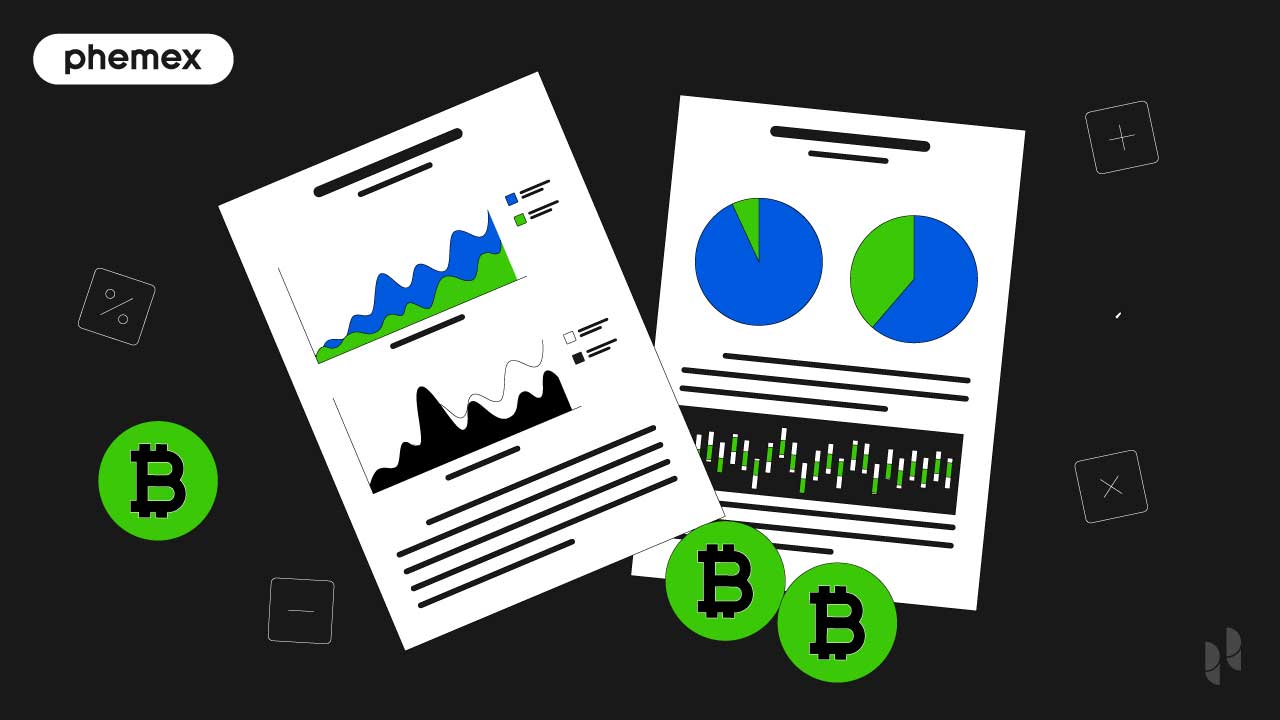Over the past few years, cryptocurrencies have seen a consistent and significant increase in adoption rates by investors both new and experienced, retail and institutional. And yet, cryptocurrency as an asset class is still highly volatile, involving a lot of risk.
Naturally, concepts and approaches from traditional finance have thus been applied to the wild, unchartered territory of crypto investing, with risk parity being one of these.

What Is Risk Parity?
Risk parity is a portfolio optimization framework whereby an investment portfolio is built up of uncorrelated assets and weighted according to each asset’s volatility, such that there is a balanced risk share among all assets.
Put another way, a risk parity portfolio is an equally weighted portfolio wherein the weights refer to risk rather than capital invested in each asset.
It is similar to the Modern Portfolio Theory (MPT) in that it is a method to allocate capital across multiple asset classes, but while MPT tries to derive the optimal mix of asset classes based on expected returns and risks, the risk parity approach allocates the portfolio by equalizing the risks of each asset class, without factoring in expected returns. It then uses leverage to scale the allocation to a tolerable level of risk or volatility.
For example, if an investor allocates $100 to a bond and $100 to a stock, the majority of risk comes from the stock, as it is a much riskier asset. If he instead invests $50 to the stock and $150 to the bond, the overall risk of the portfolio is much lower given that bonds are more stable–but so is the return…but if he tacks on some leverage to the bond to “compensate” for the lower returns, the portfolio will achieve a similar overall return as the riskier, stock-dominated one, but with much lesser risk.
Some recent research have found that for the same level of portfolio volatility, the risk parity approach can deliver better returns.
Risk Parity Portfolio Construction in Crypto Trading
In traditional finance, the risk parity strategy is feasible as there are various uncorrelated assets to choose from, such as bonds, equities and commodities, and in different sectors. By spreading the risks over these different classes of assets, portfolio returns can be maximized.
However, there isn’t such a differentiation in crypto assets–if Bitcoin goes up, everything else in crypto generally goes up, and if it goes down, every other coin goes down too. Advancements in the DeFi sector, however, have provided investors with more options.
Investors can diversify their crypto portfolios with relatively safer, large-cap coins such as Bitcoin, Ethereum and Cardano, or small-cap, early stage coins that have the potential for 100X or more gains, with some allocation to stablecoins to derive more stable yield income (although Terra Luna’s recent collapse has shown that not all stablecoins are the same!)
So if Crypto A has a volatility of 50% and Crypto B has a volatility of 10%, you would have more Crypto B assets in your portfolio than you would Crypto A assets, to balance them out equally and ensure that your risk is spread out as much as possible.
The three keys to creating an effective crypto risk parity portfolio are:
- Regular rebalancing: To create an effective portfolio, it is important to regularly rebalance the amount of each crypto being held. The reason this is crucial for an effective portfolio is that cryptocurrencies fluctuate often, and therefore, to ensure that risk is equally being distributed across the entire portfolio, high-risk cryptos should be reduced while more stable, lower-risk cryptos should be held in relatively larger quantities.
- Low correlation: A crucial aspect of building an effective risk parity portfolio is ensuring that assets are uncorrelated so that if one asset is negatively performing, that does not affect the performance of other assets in your portfolio. Again, this is easier said than done in the crypto space where there is a strong correlation between most digital assets, but there are always opportunities–if one knows where to look.
Yield Farming vs. Staking vs. Liquidity Mining
- Leverage: This really applies to sophisticated investors or traders who have access to low costs of borrowing i.e. cheap leverage, so that they can build a portfolio of uncorrelated assets weighted according to risk, and use that leverage to boost returns while keeping a reasonable level of volatility.
How Is Risk Parity Calculated?
As aforementioned, risk parity is determined by the level of risk associated with each asset, and in this case, assets refer to cryptocurrencies.
This means that if two cryptocurrencies are being compared–one with high risk and high expected returns and another with low risk and long-term returns–using risk parity, investment in the high-risk crypto would be slightly lower than the low-risk crypto asset.
To calculate risk parity, the following values need to be discovered:
- Portfolio Return (Rp = ∑ni=1 wi ri )
- Portfolio Standard Deviation or Variance
- Risk Contribution for each asset (Weight of Asset x Standard Deviation of Asset)
To easily calculate risk parity, you can use a risk parity calculator or a risk parity excel spreadsheet.
What Is Hierarchical Risk Parity?
Hierarchical Risk Parity (HRP) is a risk management algorithm that can be used to construct optimized portfolios by assessing the relationship between assets, calculating risk levels, and visually representing these calculations through graphs.
It was developed by Marcos Lopez de Prado, a visiting Professor at Cornell University’s College of Engineering who has been credited with modernizing the discipline of finance management through machine learning and supercomputing.
The fundamental principle behind hierarchical risk parity is that investment assets are not equal in terms of risk, and hence diversification should focus on allocation of risk (indicated by volatility) rather than capital.
Hierarchical risk parity works in three stages:
- Tree clustering: In this step, a dendrogram diagram is built that visually represents a hierarchical tree. Hierarchical clustering finds the distance between assets and groups them into a tree, allowing allocations to be represented through a tree graph.

A Sample Tree Cluster (Source: MathWorks)
- Quasi-diagonalization: This next step is performed so that the largest values lie along the diagonal and similar investments are grouped together. At the same time, different assets are kept farther apart.

Example of Quasi-diagonalization (Source: MathWorks)
- Recursive bisection: This step involves listing all portfolio items, assigning weights to each item using inverse variance, calculating the variance of each half, calculating the splitting-factor alpha, and rescaling the weights of both halves using alpha. This process is repeated until you have only one asset in each section.

Is Risk Parity a Good Strategy?
Using the risk parity strategy in investing has both benefits and disadvantages. One of the main advantages of a risk parity strategy is the ability for diversification as investors can have a well-diversified portfolio instead of being restricted to a specific type of asset.
The risk parity strategy is also useful during market downturns or recessions. This is because it effectively combines risky and relatively stable assets. During a recession, the stable portfolio assets compensate for the volatility of riskier assets.
However, the risk parity strategy also comes with its limitations, including the difficulties associated with monitoring the portfolio, mainly because it contains a range of assets that are likely to change very frequently.
The risk parity strategy is therefore most suitable for those who have access to cheap leverage as well as the ability to manage the risks that comes from using this leverage.
Another disadvantage of risk parity investing is that it is highly dependent on market timing which could affect an investor’s ability to sell off a cryptocurrency if risks go beyond expected limits.
Conclusion
As an investment management strategy, risk parity has had a respectable track record in traditional finance, and is expected to deliver similar outcomes for crypto investing. However, the heightened volatility in the crypto market presently, which has been widely likened to that of the tech sector in the early 2000s, means that no one single approach or strategy will suffice. It also means that investors need to bring to bear all their experience, judgment and no small amount of caution when navigating the choppy waters of crypto investing.
Read More
- Capital at Risk vs Value at Risk: How to Evaluate Your Investment Risk
- What is Risk/Reward Ratio in Crypto: A Powerful Trading Tool for Beginners
- Crypto Portfolio Allocation: Should Crypto be Part of Your Portfolio?
- Hedging Bitcoin: 5 Risk Management Strategies in Crypto Trading
- What is The Efficient Frontier: Key to Profitable Investing
- What Is Risk Reversal: How to Leverage Trade Crypto Safely
- How To Trade Crypto: The Ultimate Investing Guide
- What Is Modern Portfolio Theory: A Powerful Investment Optimization Approach









